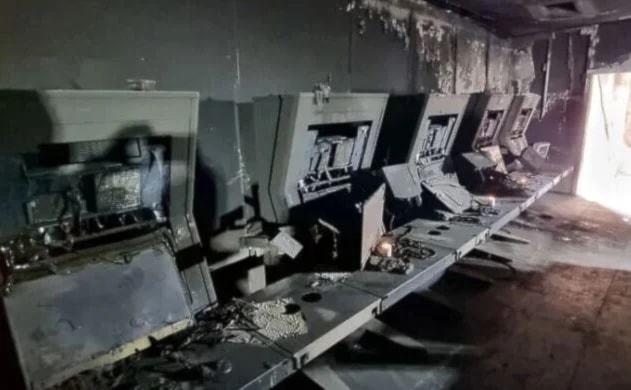IOF reveal results of investigation into October 7 operation
The Israeli occupation forces published the findings of their investigation into the events at the village of Kfar Aza and the Nahal Oz base during the October 7 operation.
-

The burned command center at the Nahal Oz base of the Israeli occupation forces after being stormed by Palestinian Resistance fighters on October 7, 2023. (File photo)
On Monday, the Israeli occupation published the results of its investigation into the October 7, 2023 events at the village of Kfar Aza and the Nahal Oz base.
The investigation revealed a series of failures that allowed Hamas fighters to kill and capture Israeli settlers. One of which was the shortage of soldiers at the base.
The investigation stated that Military Intelligence and the General Security Service (Shin Bet) failed to issue any warning before the attack.
The investigation further detailed that 250 Hamas fighters entered Kfar Aza, killing 64 people and capturing 19 others, while the fighting continued in the area for three days.
According to the investigation, which highlights a series of leadership failures, "the failure to manage the fighting in Kfar Aza was due to serious mistakes made during the battle," and the lack of coordination between the forces "resulted in the tragic outcome of dozens being killed and captured."
The investigation also revealed that Hamas fighters were able to take control of the village of Kfar Aza within the first hour of the attack, due to a shortage of soldiers and the confusion that prevailed in the area.
What happened at the 'Nahal Oz' base?
Regarding the events at the Nahal Oz base, located just 850 meters from the Gaza Strip, the investigation confirmed that it "was unprepared for the attack, as the defensive fortifications were neglected, and soldiers were instructed not to stay alert inside their tanks," while the defensive positions facing the Shujaiya neighborhood were "completely empty."
According to the report, "there were no trenches or major obstacles to impede the attack, which allowed Hamas fighters to reach sensitive locations quickly." As a result, "the attackers succeeded in neutralizing the defenses and taking control of the base in record time."
The investigation concluded that operational standards at the base were "extremely low," that "there was no clear minimum number of troops required at the site, that military sites should not be used as multi-unit bases," and that "the failure of the military leadership was reflected in the performance of soldiers who did not seek to engage effectively with Hamas fighters."
Read next: Israeli media: Oct 7 intel failure proves Hamas hard to infiltrate
The investigation stressed that "the battle at the Nahal Oz base revealed a deep crisis in the Israeli army system," as "negligence and planning failures led to the base's rapid fall," raising concerns about the army's readiness to confront similar attacks in the future, amid widespread shock in "Israel" over this military failure.
The operation was carried out in two waves: the first wave involved 65 al-Qassam fighters between 6:30 and 7:00 am, followed by a second wave of 50 fighters between 9 and 10 am. By then, over 250 fighters had taken complete control of the base.
Commenting on these findings, government comptroller Matanyahu Englman stated that the Israeli army's investigation into its failures on October 7 "reinforces the need for his office to investigate them, as it is the only body capable of overseeing all political, military, and civilian levels."
'The price of October 7 was unbearable'
This came after the Israeli occupation force revealed, a few days ago, the final results of the investigations it conducted into the October 7 attack, acknowledging Hamas' success in systematically deceiving "Israel."
The investigations stated that "the October 7 attack resulted in the killing of 1,320 Israelis and the capture of 251 Israelis, including both soldiers and civilians."
The Israeli army acknowledged that "the price it paid on October 7, 2023, was unbearable, in terms of both the dead and the wounded."
Additionally, the investigation pointed out that "the Israeli Air Force failed to maintain air superiority, the Navy did not secure the borders, and the Operations Division did not adequately prepare its forces to confront the attack."
The Israeli army said in its investigations that it "expected a breach in four points, carried out by 70 fighters, but in reality, the breach occurred in 117 points, carried out by 5,600 fighters."
It noted that "the first wave of the attack targeted strategic sites, crippling the capabilities of the Southern Front Command." In the second wave, "settlements and military sites were seized," and "the third wave was launched after Hamas recognized the success of its offensive operation."

 4 Min Read
4 Min Read








